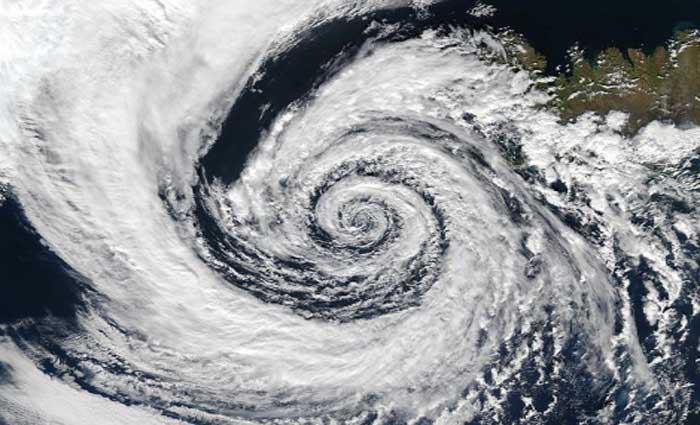The cost of Cyclone Debbie and catastrophic flooding
It is not an easy exercise to calculate the costs of natural disasters like cyclones and floods or the broader economic impact.
But there is a general course of events. Natural disasters result in damage to property and infrastructure and interrupt and delay spending and production.
Some of the costs are recouped from insurers, governments, charities or private organisations.
Depending on the size of the event, share prices of insurers, transport operators and miners may fall, negatively affecting shareholders. Insurers may seek to lift premiums if insurance payouts are high, affecting other policyholders. While economic activity falls when natural disasters hit, rebuilding work serves to boost economies in ensuring weeks and months.
Cyclone Debbie crossed the north Queensland coast on March 28 as a Category four system at Airlie Beach in Queensland near Bowen and Mackay. The cyclone was then downgraded, eventually to a tropical low, moving south-west and then south east to the Gold Coast and northern NSW.
The Insurance Council declared a catastrophe for damage caused by Severe Tropical Cyclone Debbie and then extended the catastrophe declaration for northern NSW for flooding caused by the cyclone.
The high rainfall continues to flow through river systems, creating the risk of further flooding. Rockhampton is currently bracing for flooding either late on April 5 or April 6.
Clearly no price can be placed on the tragic loss of life caused by the floods. How will the cyclone and floods affect the economy?
Cyclone Debbie and resultant floods have damaged vegetable and sugar cane crops, residential and commercial property, farms, transport infrastructure, tourism facilities and delayed coal and beef production.
The broader economic impact of the cyclone and floods should be limited as they hit late in the first quarter and early in the second quarter. The main question is how quickly coal production resumes. A prolonged delay would negatively affect June quarter economic growth although this will be offset by repair and rebuilding work later in the quarter and coming quarters.
Coal transport: Rail operator Aurizon said the Blackwater system will re-open later this week. The Newlands rail system will re-open in 2-3 weeks. The Goonyella rail system may re-open in 5 weeks. The West Moreton system has re-opened. The Moura rail system may re-open in 2 weeks.
QCoal has declared force majeure on two coal shipments due to load this week due to the rail disruptions. Force majeure is defined as an “act of God” or “unforeseeable circumstances” that prevent a contract being fulfilled. Jellinbah Group and Yancoal are also amongst those that have declared force majeure on shipments.
Insurance impact: The Insurance Council says the “level of catastrophe has not been seen since ex-Tropical Cyclone Oswald in 2014, when storms and flooding affected large parts of Queensland and NSW and caused insurance losses of almost $1.2 billion.”
Vegetables: The National Farmers Federation has cited industry groups estimating damage to crops of up to $1 billion. Prices for a raft of vegetables will rise considerably in coming months.
Beneficial rainfall: Many parts of inland Queensland received favourable rains, including beef properties around Rockhampton and Moura. Before the floods around 80 percent of Queensland was drought declared.
Queensland property: About 600 residences throughout northern parts of the state have been ruled uninhabitable since Cyclone Debbie hit the coast on Tuesday. The Courier Mail has reported that 76 residences are deemed uninhabitable in the southeast, although the indications are this is likely to go up by 250-300 in coming days.
State & territory assistance: Concessional loans and grants have been provided by state and commonwealth governments to primary producers, individuals and businesses. Financial assistance is also being made available to local government authorities to restore damaged essential public infrastructure.
A Disaster Recovery Payment is administered through Centrelink and provides $1000 per adult and $400 per child for people with damaged homes
NSW impact: Disaster zones were declared in the Tweed, Lismore, Byron, Richmond Valley, Kyogle and Ballina local government areas.
Sugar: The peak body for Australian sugar growers, Canegrowers, has noted: “ With the harvest due to start in less than two months, surveys are indicating cane losses of up to 35 per cent in the Proserpine region ($50 million), 20 percent across the Mackay region ($81 million) and 20 percent in Plane Creek ($18 million).” It also notes that: “The mills and sugar terminals appear to have escaped serious damage.
Coking Coal: From CBAs Mining and Energy Commodities Strategist, Vivek Dhar: “BHP Billiton said almost all of its coking coal mines in Queensland were affected by Cyclone Debbie. These mines “have crews returning to work to begin dewatering and preparation for return to operations.” The South Walker Creek (around 2 per cent of global exports) was the exception. The company also said that “the Hay Point [port] terminal is ready to receive coal from the mines and can begin shipping operations once the harbor master provides clearance.” If the damage from Cyclone Debbie is limited mostly to the rail system, the resumption in Australian coking coal exports could be counted in weeks.”
“The repair estimates suggest that 13-17 million tonnes (Mt) of seaborne coking coal supply (around 4-6 percent of global exports) and 2-5Mt of seaborne thermal coal supply (around 0.2-0.5 percent of global exports) may be lost this year. Some of the lost volume will likely be mitigated by drawing down on port stockpiles and increased haulage rates through the remainder of 2017.”
Craig James is the chief economist at CommSec.
